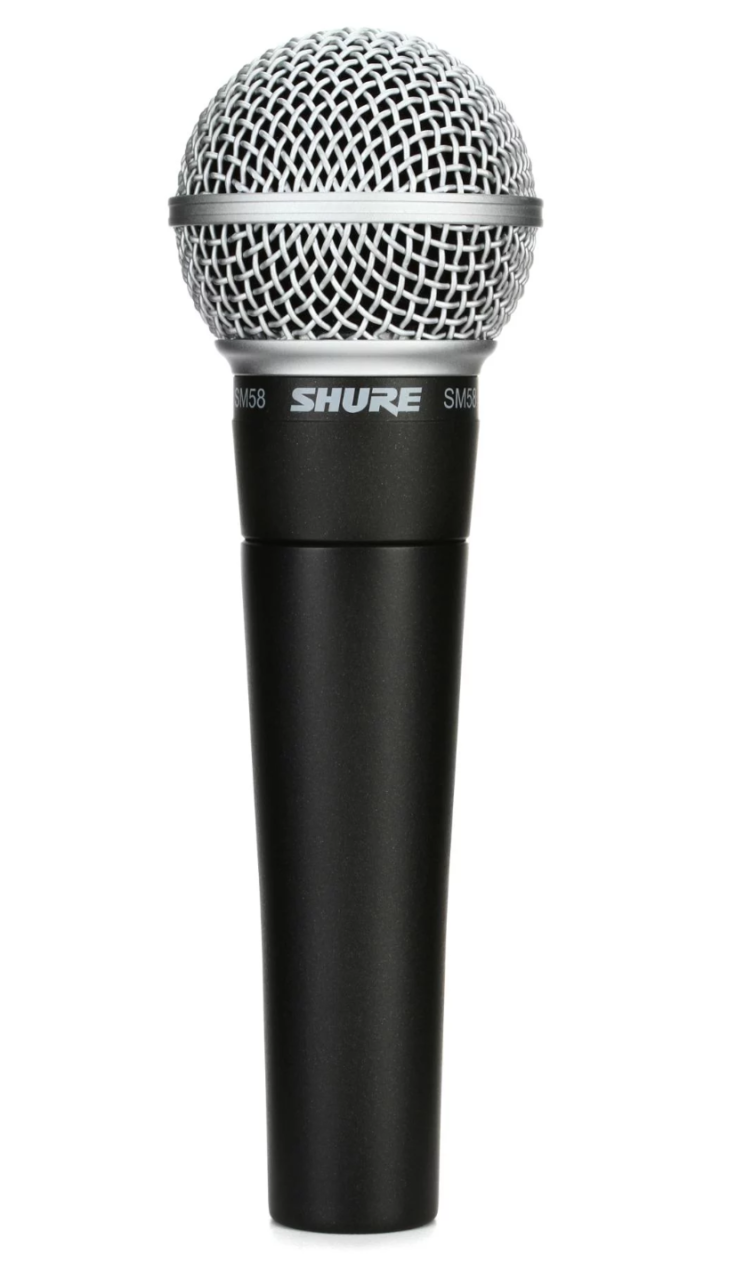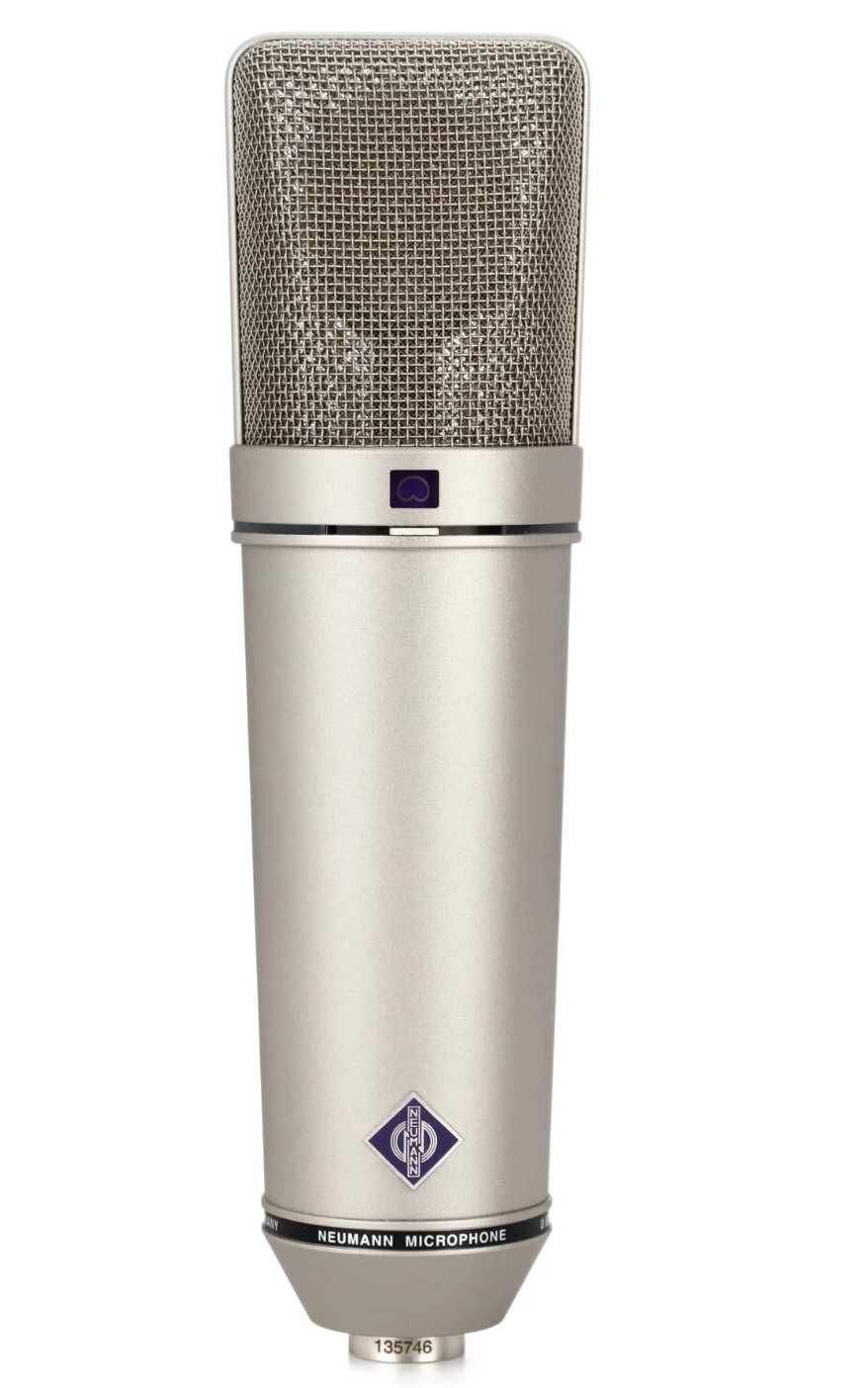Understanding Microphones – Dynamic vs Condenser
If you don’t mix sound for a living there’s not a lot of reason to learn the difference between the types of microphones. But when you spend your day trying to effectively gather audio on set you better become an expert on which microphone to use when.
The first category is to consider is whether a microphone dynamic or is its condenser. Dynamic microphones do not require power to generate a signal creating current from the sound waves. These microphones are less sensitive than condenser microphones and therefore are used a lot by rock and roll bands and reporters in loud environments. Pictured below is the Shure SM58. If you’ve ever been to a rock and roll show you’ve probably seen this one on stage. Another famous dynamic microphone is the Electro Voice RE50 that is very often the one with the news network’s logo affixed to it. I carry a few of these in my kit for when I work with the networks.

Condenser microphones, on the other hand, are much more sensitive and require phantom power to operate. They’re usually used in quieter environments or when more sensitivity is required. This would include a studio where the sound is controlled or when the sound is far away and greater sensitivity is needed to gather the audio from a farther distance. For example, most shotgun microphones are condenser microphones. But then again, most lavalier microphones are also electret condenser microphones even though they’re used close to the source.
One of the most famous Condenser microphones is the Neumann U87 (pronounced “noy-man”). This microphone can be found in recording studios all over the world and you’ll likely hear a voice recorded on it several times a day when you’re listening to a song or a voice-over on the radio. Probably the most common microphone you’ll see on a film set is the Sennheiser MKH-416. Just about every sound mixer I know carries one of these in their kit and uses it from time to time on production. Although this microphone is ubiquitous it probably isn’t the most used microphone in most sound mixers kits.

Confusing? Well, when it comes to sound it often depends on the situation which microphone is going to sound the best. And the only way to know which one is going to sound the best is either through testing or experience. It’s important to try new things all the time and I encourage everyone recording sound for the picture to listen to as many microphones as possible in different environments. This is how you learn which mic to reach for any given job.
Need some advice for an upcoming job? Don’t hesitate to reach out to me about finding the right microphone.
Posted on: February 12, 2019, by : Jimmy Gilmore